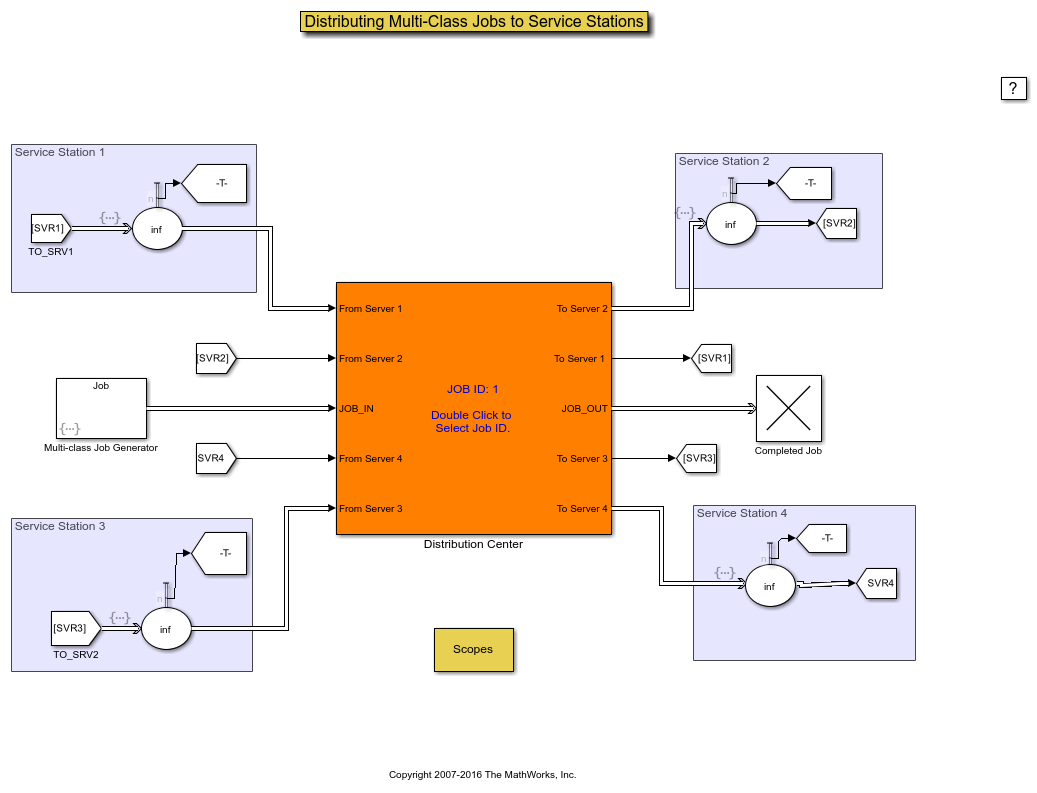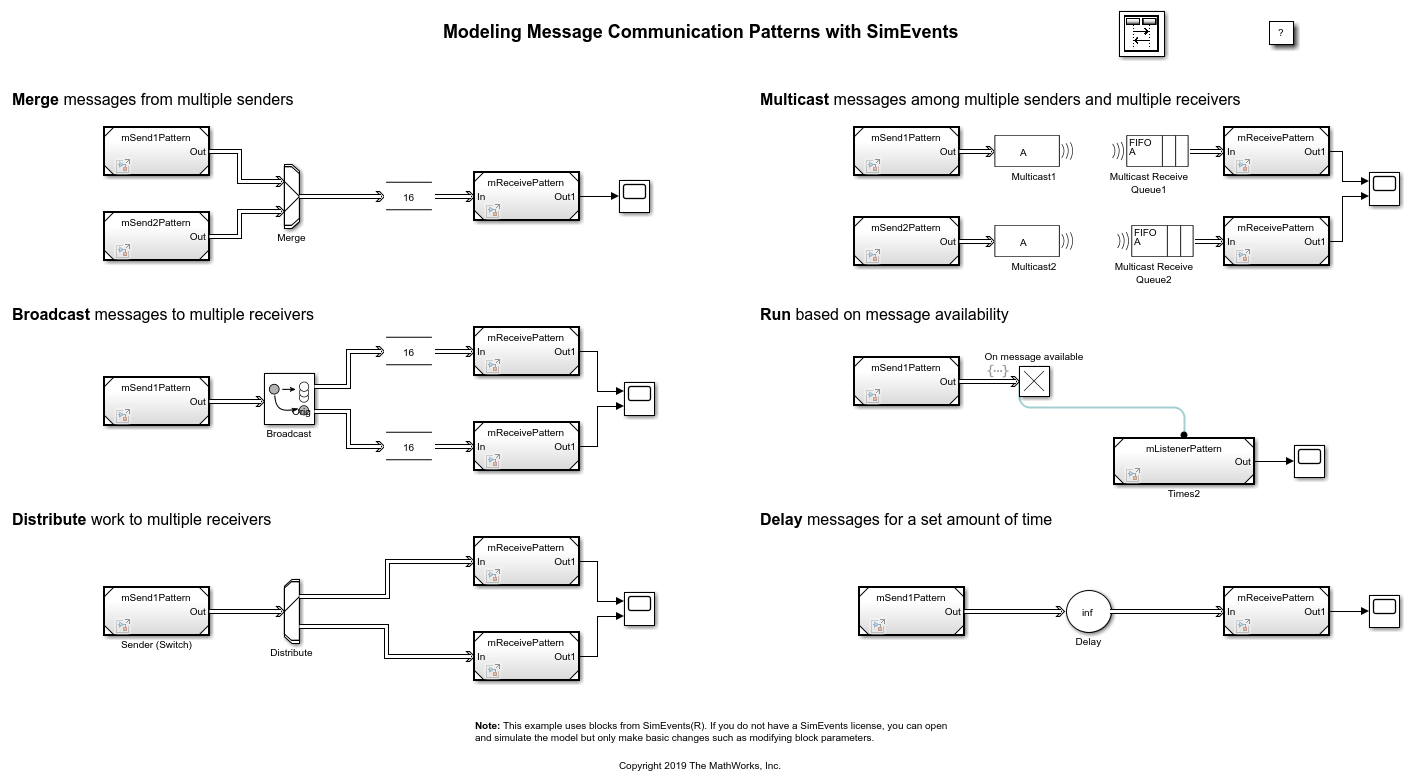Route Entities and Simulink Messages
You can use these blocks to route entities in your model. Use the Entity Gate block to control entity flow, use Entity Input Switch and Entity Output Switch blocks to merge and split paths, Entity Multicast to multicast entities, and Entity Selector block to select entities based on attributes.
You can also use these routing techniques to route Simulink® Messages.
Blocks
| Entity Gate | Gate entities |
| Entity Input Switch | Switch input entities |
| Entity Multicast | Send multicast entities |
| Entity Output Switch | Output entities |
| Entity Selector | Select entities |
| Multicast Receive Queue | Receive multicast entities |
Topics
- Route Vehicles Using an Entity Output Switch Block
This example shows how to route vehicles to two different pumps in a gas station by controlling an Entity Output Switch block.
- Broadcast Entities Using Entity Multicasting
Send, receive, transport, and multicast entities wirelessly.
- Using Entity Priority to Sequence Departures
This example shows how to use entity priority to sequence entity departures when multiple entities are available to depart.
- Use Queue Event Actions to Model a Storage Tank
This example shows how to use Entity Queue block event actions, a Simulink Function block, and an Entity Gate block to model a bottle storage system with a limited capacity.
- Match Entities Based on Attributes
This example shows how to build a model to store and match entities representing bicycle components.
- Control Output Switch with Event Actions and Simulink Function
Use messages to change Entity Output Switch output port.
- Enable a Gate for a Time Interval
Open or close a gate using the Entity Gate block.
- Role of Entity Ports and Paths
What entity paths represent.
- Role of Gates in SimEvents Models
What gates represent in various models.



